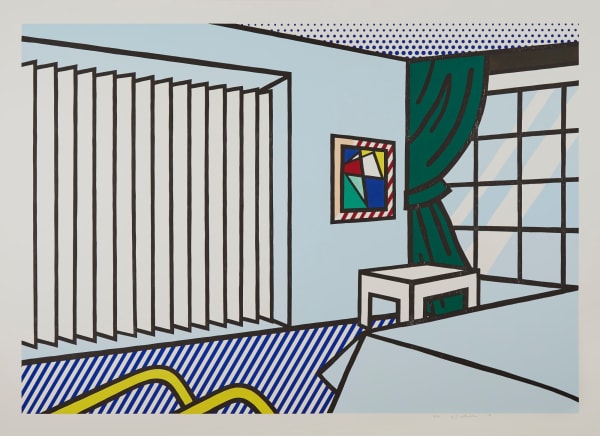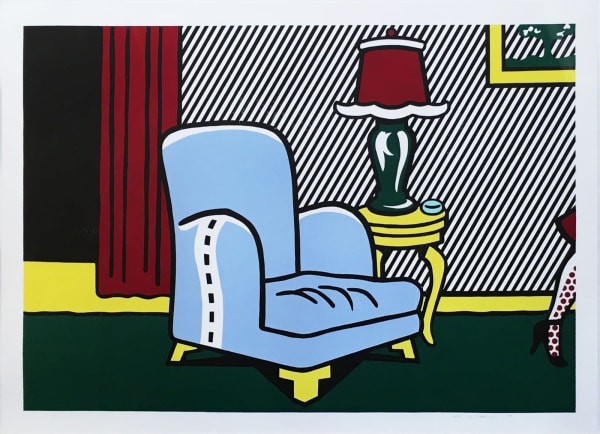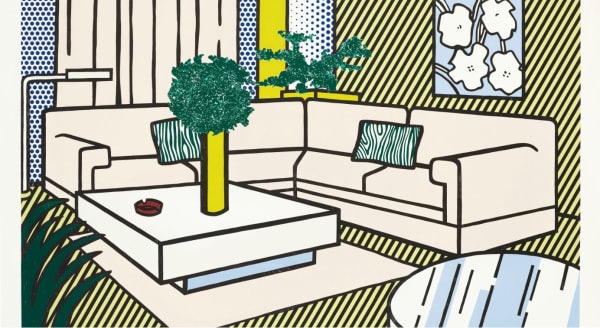Roy Lichtenstein | Interiors : Andipa, London
Andipa Gallery is proud to present the complete set of Roy Lichtenstein’s ‘Interiors’ series. Made up of a total of eight prints from the early 1990s, Lichtenstein has created scenes of domestic interiors in his iconic Benday dot style. As one of the last series created before his death in 1997, the ‘interiors’ series acts as an apex of his fascination with a contemporary culture obsessed with consumerist visual culture.
The scene in each print is highly stylised. The composition is made up out of a combination of lines and Benday dots to create illusions of depth and shadow within the print. Each print is an interpretation of different bedrooms and living rooms. The consumer society Lichtenstein portrayed in his earlier work has become transformed into a world of consumer excess within his ‘Interiors’ series. Despite portraying multiple domestic interiors, there is nothing warm and comforting about these spaces. They are unlived in and impersonal. The pristine lines and dots, refer to the uniformity and monotony of houses across America. In the consumer culture of the late 20th century, similarities between the interiors depicted in these prints and one’s own interior can be projected on to by any middle-class viewer of this period. They were inspired by a huge billboard advertisement for an Italian furniture store that Lichtenstein saw in the late 1980s, and adverts in the Yellow Pages, showing a direct influence by consumer culture. Lichtenstein was part of the Pop Art movement, who wanted to separate themselves from abstract expressionism and return to incorporating recognisable images into their art, often turning to the visual language of popular culture and advertising. His prints carry a sense of artificiality and isolation within the ‘blissful’ space of middle-class domesticity, hinting at the alienation experienced in a Capitalist culture. Through an uninhabited room full of objects, Lichtenstein challenges the consumerist assumption that the accumulation of material goods brings fulfilment.
In a way similar to his Nudes series (1994), Lichtenstein is self-referential within his artwork. On the walls of each interior Lichtenstein has included at least one work of art, which he refers to as ‘restful paintings’. The art in these interiors has become low art, relegated to the status of well-chosen decoration no different to the sofas or vases. He is further challenging notions of representation through his depictions of his own art. His parodic recreations are very stylised, Lichtenstein a la Lichtenstein. This is like his recreations of other art history masters such as Monet’s Waterlilies, a piece which can be seen within this series, painted in Lichtenstein’s own style. Lichtenstein’s directs the humour at himself, and the status of his art within society. Lichtenstein’s droll judgement of the contemporary soulless consumer culture in his interiors in turn embody his aim of making art that reveals an insight into the culture of its time, rather than for mere aesthetic and decoration, ironically transforming itself into high art.
Discover more Roy Lichtenstein with our selection of Roy Lichtenstein screen prints for sale.








